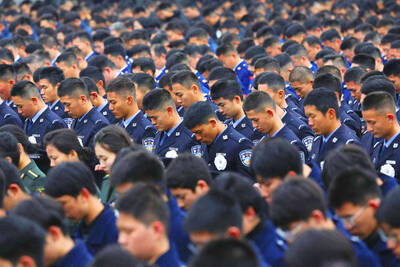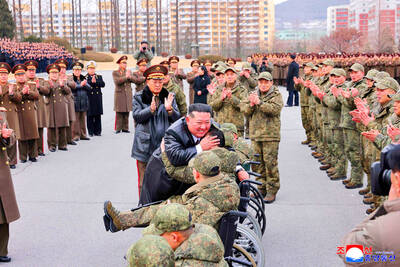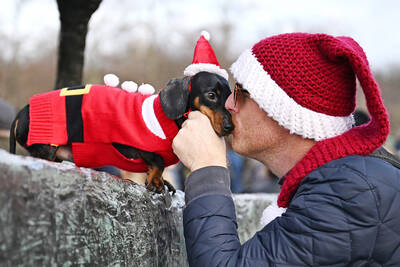A new round of criticism has broken out in South Korea over the accuracy of a recent article that reported a dramatic advance in human stem cell research.
In the June 17 article, Hwang Woo-suk, a veterinary researcher at Seoul National University, reported that he had developed embryonic stem cell colonies from 11 patients.
The article, published in the journal Science, was hailed as a major step toward the goal of treating patients suffering from many serious diseases with their own, regenerated tissues.
But Hwang's research, though praised by the Seoul government, faces mounting criticism from some South Korean scientists.
The newest questions about the paper concern DNA fingerprint tests carried out to prove that the embryonic stem cell colonies were indeed derived from the patient in question. The test, demanded by referees for Science, was necessary because cell colonies often get mixed up or overgrown by other cells in even the best laboratories.
Usually any two DNA fingerprint traces will have peaks of different heights and alignment and different background noise. But in several cases the pairs of traces in the Science article seem identical in all three properties, suggesting that they are the same trace and not, as represented, two independent ones.
Monica Bradford, the deputy editor of Science, said that the journal had asked Hwang for an explanation and that experts probably needed to examine the original data in Hwang's possession before any conclusions could be drawn.
The new charges have also attracted attention in South Korea. Thirty faculty members at Seoul National University wrote on Wednesday to the university president, Chung Un-chan, saying that, as experts in the life sciences, "We find a significant part of the DNA fingerprinting data is inexplicable."
They asked Chung to create a committee to investigate possible misconduct and added, "We are extremely worried that, by keeping silent, we are endangering the international credibility of the Korean scientific community, which in turn will cause irreversible damage to our country."
The University of Pittsburgh, where Hwang's American co-author, Gerald Schatten, is based, has asked its office that investigates research misconduct to look into this and other problems with the Science article.
Earlier this week the critics noted that several photographs, issued online by Science as a supplement to the June 17 article, were duplicates of one another, though they ostensibly showed 11 different cell colonies. But the duplication appeared to have an innocent explanation. The editors of Science announced that the originally submitted manuscript had 11 different photos and that the duplicates were submitted later, presumably by accident, after a request for higher-resolution copies.
Hwang did not respond to an e-mail inquiry sent Friday. He has been hospitalized with an ulcer, said Lorenz Studer, a stem cell specialist at the Sloan-Kettering Institute in New York.
Dr. Arthur Levine, dean of the University of Pittsburgh medical school, said Schatten was a scientist of stature and had contributed ideas to Hwang, but that "discussion doesn't ordinarily eventuate in senior authorship." He added that he knew for certain that Schatten "must be deeply regretting" having accepted the co-authorship.

China yesterday held a low-key memorial ceremony for the 1937 Nanjing Massacre, with Chinese President Xi Jinping (習近平) not attending, despite a diplomatic crisis between Beijing and Tokyo over Taiwan. Beijing has raged at Tokyo since Japanese Prime Minister Sanae Takaichi last month said that a hypothetical Chinese attack on Taiwan could trigger a military response from Japan. China and Japan have long sparred over their painful history. China consistently reminds its people of the 1937 Nanjing Massacre, in which it says Japanese troops killed 300,000 people in what was then its capital. A post-World War II Allied tribunal put the death toll

‘NO AMNESTY’: Tens of thousands of people joined the rally against a bill that would slash the former president’s prison term; President Lula has said he would veto the bill Tens of thousands of Brazilians on Sunday demonstrated against a bill that advanced in Congress this week that would reduce the time former president Jair Bolsonaro spends behind bars following his sentence of more than 27 years for attempting a coup. Protests took place in the capital, Brasilia, and in other major cities across the nation, including Sao Paulo, Florianopolis, Salvador and Recife. On Copacabana’s boardwalk in Rio de Janeiro, crowds composed of left-wing voters chanted “No amnesty” and “Out with Hugo Motta,” a reference to the speaker of the lower house, which approved the bill on Wednesday last week. It is

FALLEN: The nine soldiers who were killed while carrying out combat and engineering tasks in Russia were given the title of Hero of the Democratic People’s Republic of Korea North Korean leader Kim Jong-un attended a welcoming ceremony for an army engineering unit that had returned home after carrying out duties in Russia, North Korean state media KCNA reported on Saturday. In a speech carried by KCNA, Kim praised officers and soldiers of the 528th Regiment of Engineers of the Korean People’s Army (KPA) for “heroic” conduct and “mass heroism” in fulfilling orders issued by the ruling Workers’ Party of Korea during a 120-day overseas deployment. Video footage released by North Korea showed uniformed soldiers disembarking from an aircraft, Kim hugging a soldier seated in a wheelchair, and soldiers and officials

Cozy knits, sparkly bobbles and Santa hats were all the canine rage on Sunday, as hundreds of sausage dogs and their owners converged on central London for an annual parade and get-together. The dachshunds’ gathering in London’s Hyde Park came after a previous “Sausage Walk” planned for Halloween had to be postponed, because it had become so popular organizers needed to apply for an events licence. “It was going to be too much fun so they canceled it,” laughed Nicky Bailey, the owner of three sausage dogs: Una and her two 19-week-old puppies Ember and Finnegan, wearing matching red coats and silver